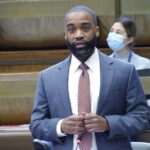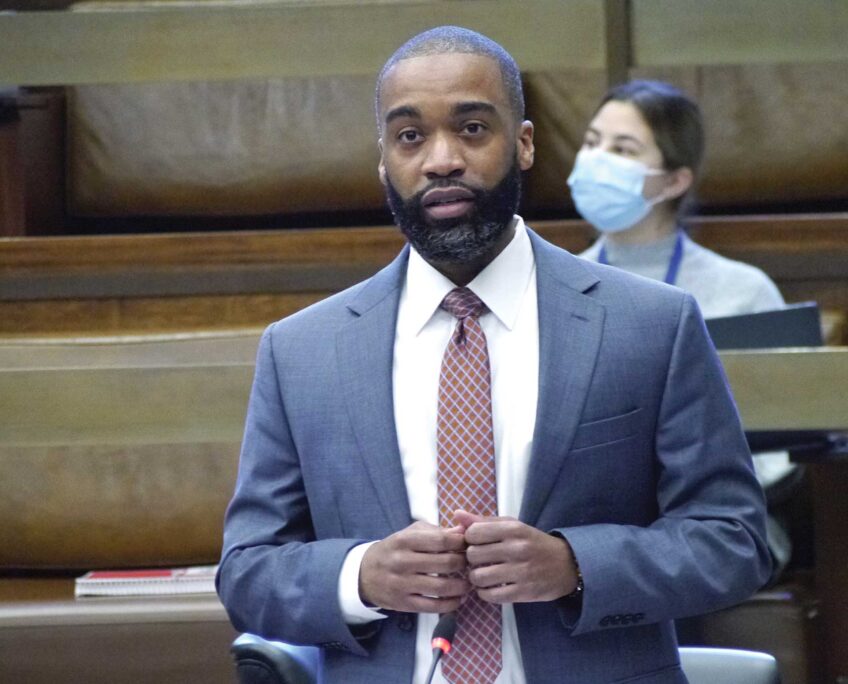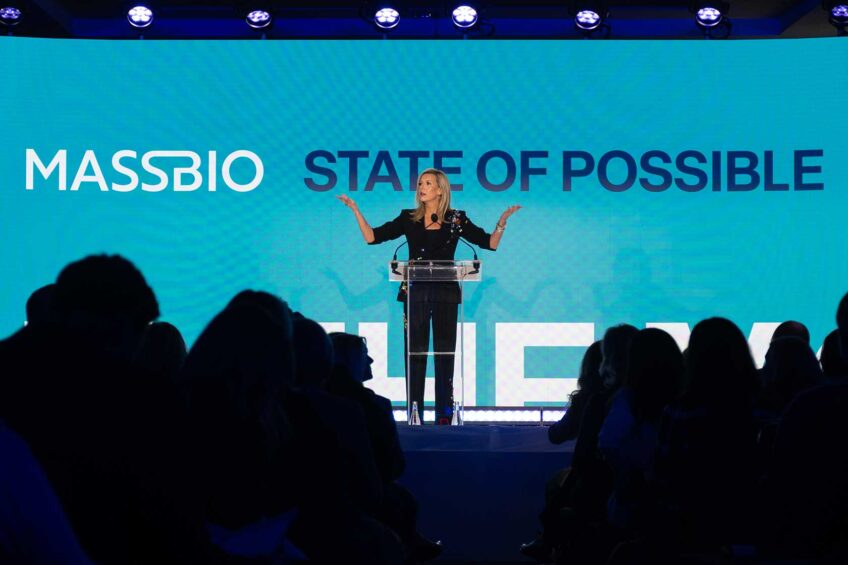Taking flight with Holland School of Technology
STEM Flight Academy holds special ceremony and open house
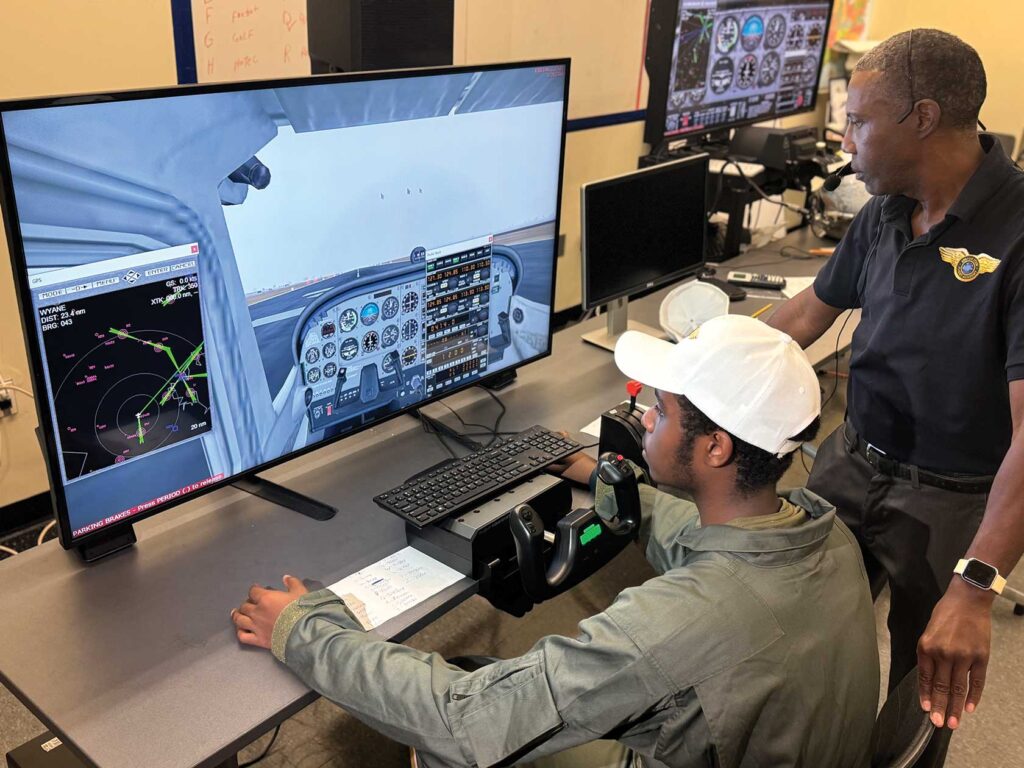
The Albert D. Holland School of Technology’s Flight Academy recently held a special ceremony and an open house for their student aviation program.
Activities included a 10-minute flight demo, speeches by Holland Tech School Headmaster Artis Street, FAA staff, Massport staff, and Boston City Councilor Brian Worrell.
The highlight of the program was the student recognition portion where student Fahad Yasin was gifted his very own flight simulator, which he can use at his home. He is the first Boston Public Schools student who is “taking flight,” says Program Director Marcus James.
He speaks highly of Yasin, saying that he helps his fellow aviation peers, along with new students, to get set up and familiar with the simulation equipment.
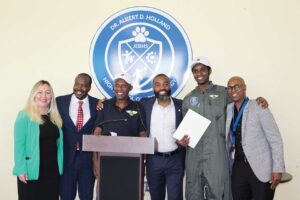
(left to right) Alfina Karajulova, Massport. Winston Pierre, Massport. Marcus James, aviation program director. Brian Worrell, Boston City Councilor. Fahad Yasin, aviation student. Artis Street, principal, Albert D Holland School of Technology PHOTO: BOSTON STEM FLIGHT ACADEMY
The simulator Yasin received is the same one that he and the students use at the school, which will help him to become more proficient on his quest to become a commercial pilot.
“[He] helps extend his knowledge to other students. Aviation is one of his favorite classes at Holland Tech,” James said.
James said that this event is the start of many others the program leaders have planned for the school year.
He shared how the Flight Center came to be, based on his own training as a former employee of Delta Airlines. The program is a part of Boston Public Schools through the Boston STEM Academy.
Through an eight-month curriculum, the program introduces students to the aviation industry.
“With the aviation industry, we teach the kids about the jobs and the opportunities that are available to them through the industry itself,” said James. “So, from airport management, it teaches them about opportunities at the airport — a regional, international airport, where they can have a variety of jobs there, [like] working at one of the local airports’ [stores], like Hudson News.”
“Going into the flight side of the airport … includes working at the counter for an airline, working as ground crew, working for ATC, for the government, working for the various entities, [such] as airport management, and working on the international side of the airport,” said James. “Working at Terminal E, [entails] doing logistics [and] working for some of the entities that are at Terminal E, which would be immigration,” he added.
James said that the two parts are very connected; however, the primary difference is with the introduction to flight section, where students are also introduced to the transportation side of the industry, which includes working with flight simulation technology and learning about flying a plane.
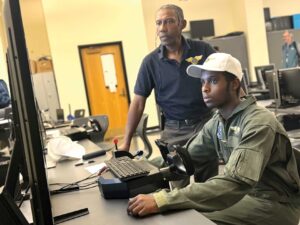
Student Fahad Yasin, seated, works the flight simulator as flight program director Marcus James looks on. PHOTO: BOSTON STEM FLIGHT ACADEMY
“They learn about flight planning, they learn about weather, they learn about navigation. Then, they get into advanced navigation, where they learn to fly the plane,” said James “At some point, as they get more advanced in navigation, using GPS, using VR navigation, they start to get advanced, where they learn to fly the plane in very, very low visibility, zero, physically, but it’s not completely zero. They will get to see when they get to the destination in flight,” he said.
James stressed the importance of the program, especially for the students of color who he serves, which is the reminder that they should place no limits on themselves and demystify flight and aviation.
“No one’s limited, and especially for our young Black and brown youth who are within our communities, they believe in these things. They see them. They see the plane in the sky and say, ‘Well, I would love to fly a plane. I love to find out how a plane really flies.’… We’ve taken the mystery out of how the airplane works,” he said.
“Our flight labs [are] in a high school, where we wanted to do this. We wanted to bring it to where the students come every day. … They will understand what it is. The wording would be new to them, but once they get it, once they learn it, once they hear it, and then once they write it down and they start applying it, it will never be a mystery anymore,” said James. “In aviation, they will learn all these terminologies, and it will stay in their heads. That will prepare our Black and brown students to take flight,” he added.
Street agrees with James’ mission. He said that the Flight Center gives students the opportunity to explore possibilities within the aviation field.
“Students are learning how to continue the paths of those like Bessie Coleman, Dr. Guy Bluford, or Captain Theresa Claiborne — some of our Black trailblazers of the skies. And I am thrilled to be in a position to support our staff and students on this journey,” said Street.


